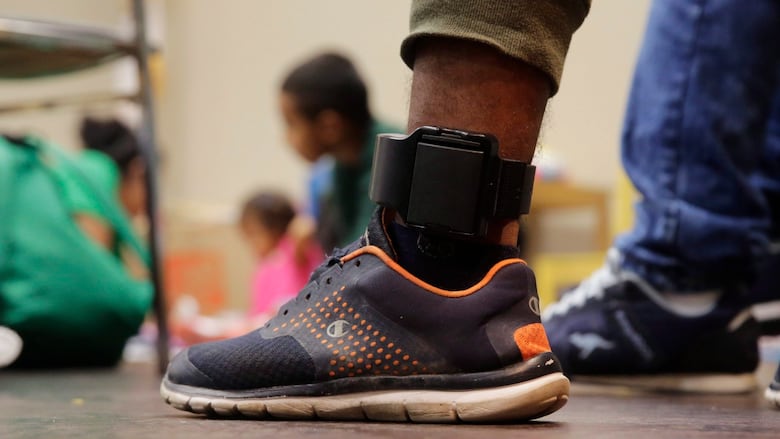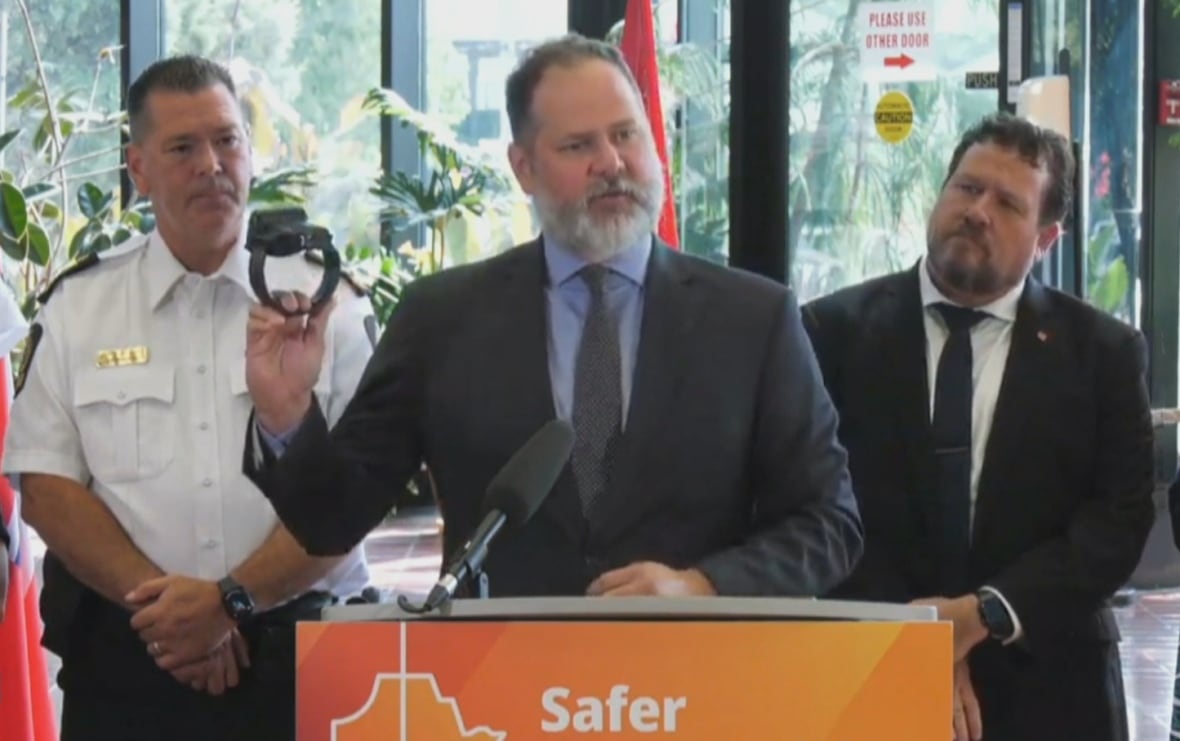Manitoba boosts number of ankle monitors to track people on bail
Province also launched new curfew-monitoring software that uses smartphones

The Manitoba government is spending $1.2 million to double the number of ankle monitors in its electronic monitoring program to 200, allowing it to track more people on bail and offenders serving community-based sentences.
The electronic devices, which have GPS monitors that allow law enforcement to be notified of an offender's location, are a tool law enforcement can use to ensure people are complying with court-imposed conditions, "and to stop violent repeat offenders from causing harm," Justice Minister Matt Wiebe said Thursday at a news conference in Brandon, where the NDP government is holding a cabinet meeting.
As of July 10, all 100 ankle devices currently in the provincial system were in use. The new funding will add another 100.
In total, the cost for the program this year is $2.7 million, a news release from the province said.
Brandon police Chief Tyler Bates commended the move, calling it "a direct response to what our communities have been asking for."
The program is "a public safety measure that helps us do our job more effectively. It keeps our citizens safe, our officers informed and our communities protected," he said.
"And for victims, especially those impacted by intimate partner violence, the reassurance this program brings is invaluable."

The electronic monitoring program was first introduced in Manitoba in 2008 to monitor car thieves. It was later expanded to include people convicted of domestic assault.
It was scrapped in 2017 by the Progressive Conservative government after a review determined that in many instances, the bracelets were either inaccurate or ineffective. The Tories changed course in 2023, promising to revive the program, citing advances in technology.
After the PCs lost that year's election, the current NDP government reinstated the program in 2024, beginning in Winnipeg and then expanding it to Brandon, Souris, Portage la Prairie, Steinbach, Dauphin, Selkirk and Winkler.
The additional monitors will enable the province to expand the program to communities in northern Manitoba, Wiebe said Thursday.
The devices can help officers pinpoint an individual's location to within two metres, while voice, audio and vibration commands allow police to communicate with the person wearing the monitor.
Loud alerts will ring out if the individual being monitored enters an area they're not supposed to, such as retail stores.
"The program allows police to take immediate action when someone isn't following their release terms," Wiebe said.
Curfew monitoring
For people who are under release conditions, but require less restrictive supervision than an ankle bracelet, the province is launching new curfew-monitoring software that uses secure video conferencing and biometrics already in use on most smartphones.
"This is now going to be monitored in the same way that we would monitor these [ankle bracelet] devices, but just done now through the technology that's in everybody's pocket," Wiebe said.
"It allows us to deploy this program more widely and meet that need that's out in the community. It will continue to hold offenders accountable, but it will decrease the burden on law enforcement."
Officers who were spending time performing in-person checks at the homes of those under a curfew can now focus on responding to emergency and other serious calls, he said.
Commissionaires Manitoba has been contracted to oversee that program, Wiebe said.
Brandon Mayor Jeff Fawcett called the measures "a big deal" for making safer places for everyone.
"A lot of the crime here is caused by repeat offenders, and it's important that we tackle this issue head-on," he said.
"We need to see public safety as a part of growing our economy. For the small businesses here in Brandon, reducing crime is crucial for a more stable and thriving environment."
Repeating past calls from Manitoba municipalities, he also urged the federal government to take strong measures on bail reform and to address the root causes of crime.
Wiebe acknowledged no monitoring device is foolproof, and some people will do anything they can to circumvent tracking.
Police will take necessary action against those who tamper with their monitoring, he said, and alerts from the devices allow quick reaction time.
"But this is about giving people the opportunity, as well, to make the right choice. If you've gotten to the point in your life where you're wearing one of these things, maybe that's what you need to make it clear to you that … 'I gotta make some changes in my life,'" said Wiebe.
The devices won't work for everyone, he said, "but maybe for some people this is the step that they need … [to] get on that right path."